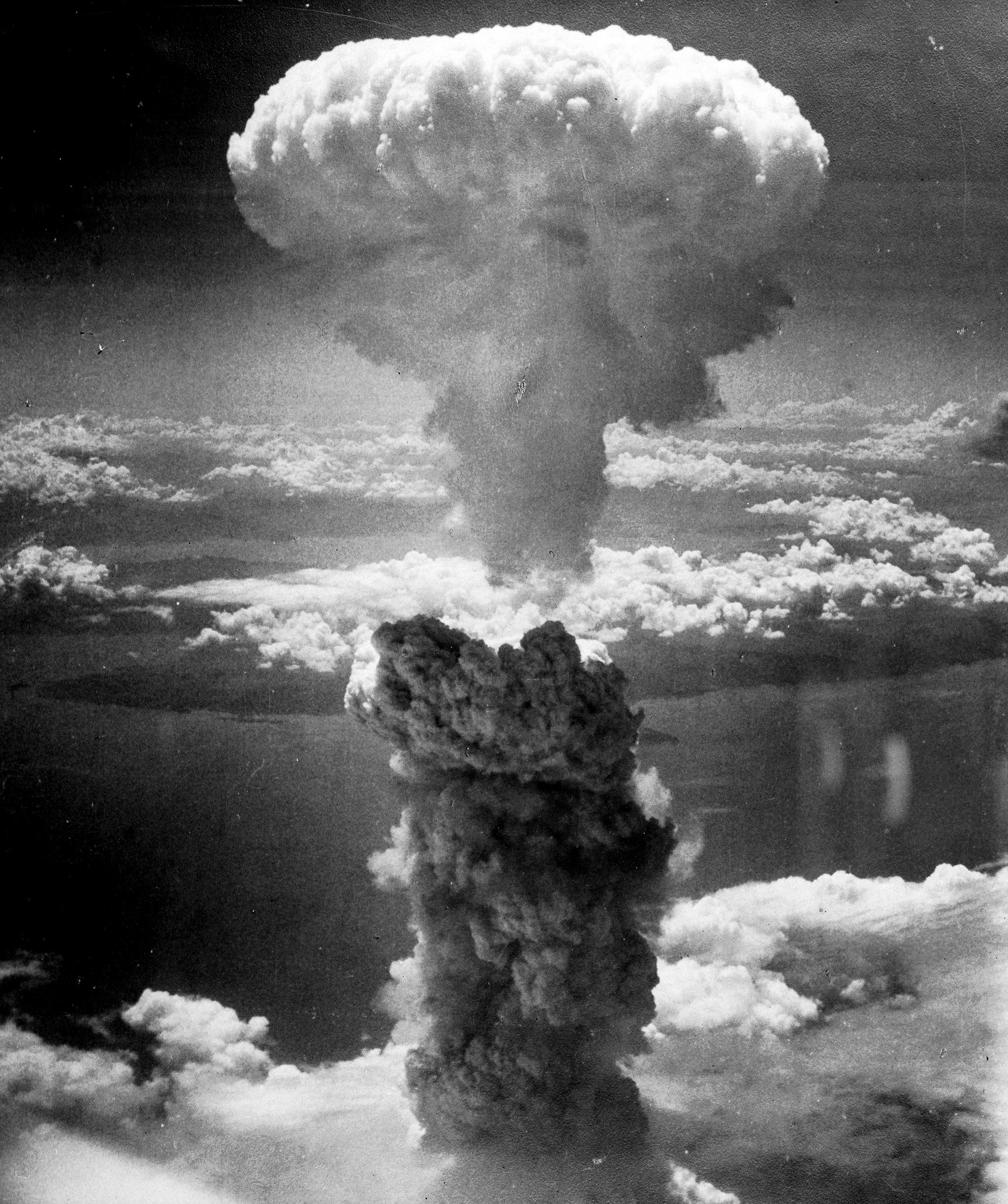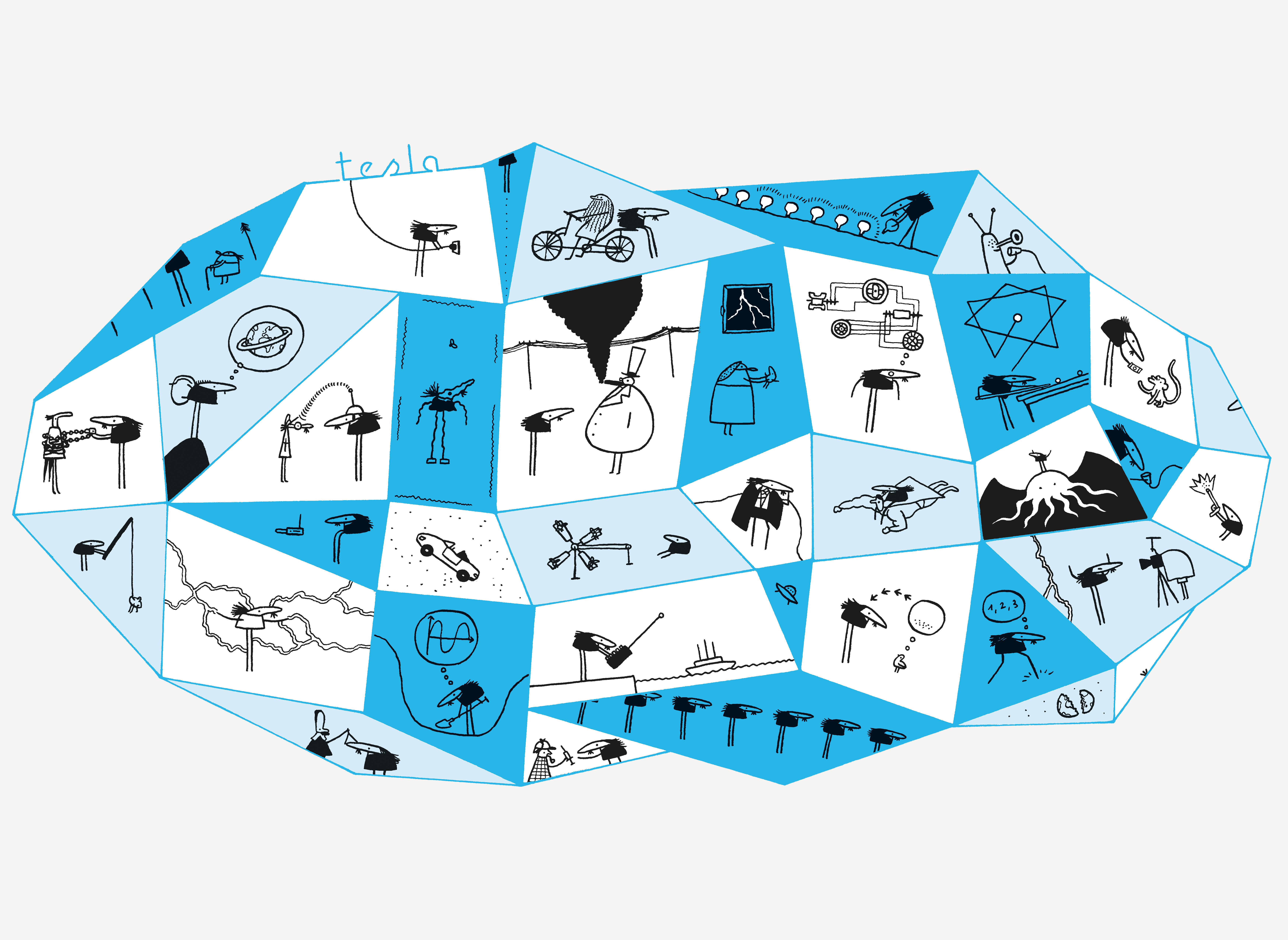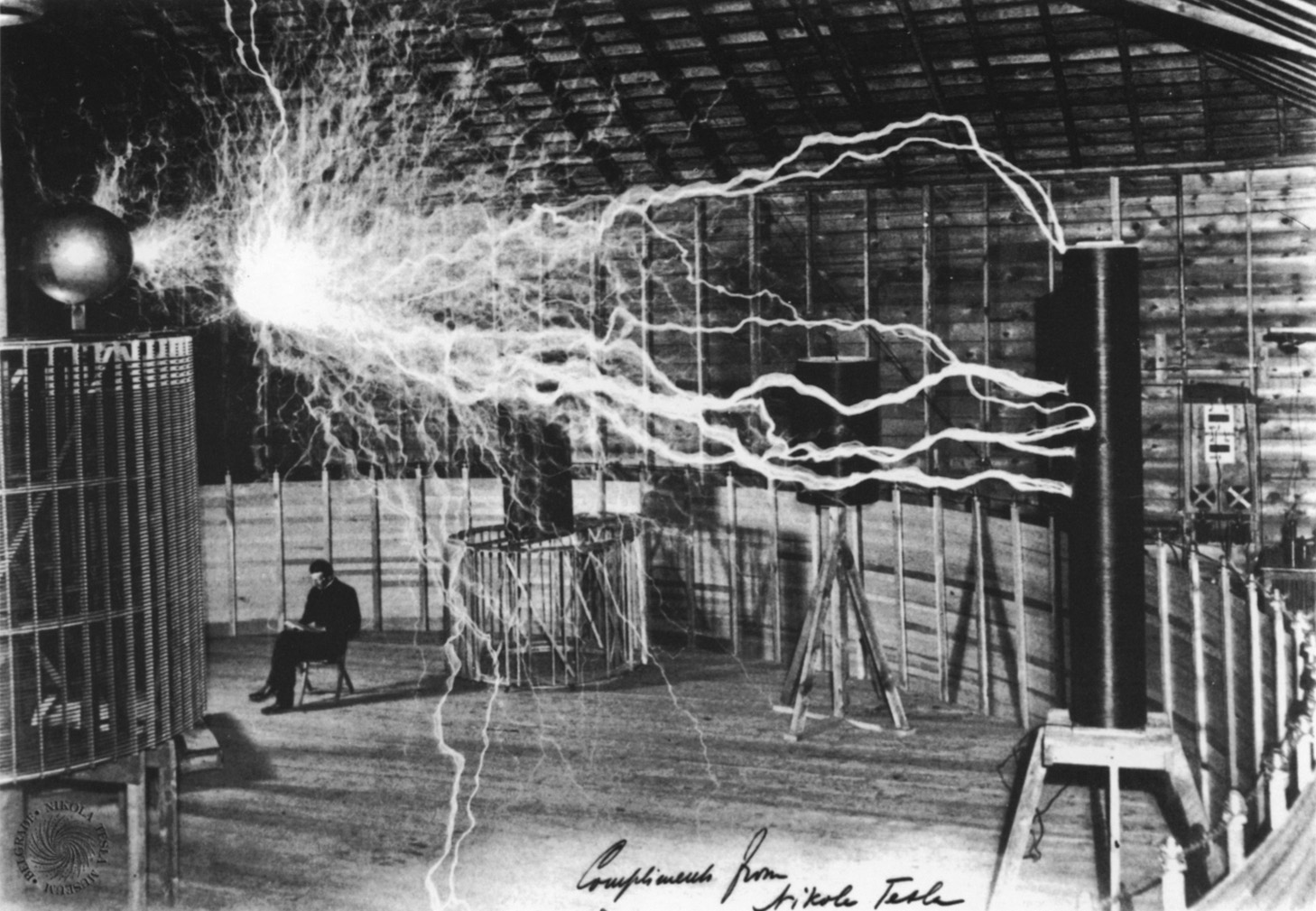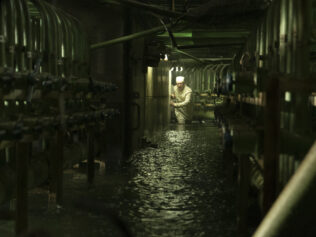
An electrical fitter in his youth, then a world-class nuclear physicist, co-inventor of the American atomic bomb. And finally, a tireless activist for peace. This is the Polish Nobel Prize winner Józef Rotblat.
In August, we mark the next anniversary of America dropping the atomic bombs on Hiroshima and Nagasaki. These bombs (just two of them) killed 200,000 people. It is a sad anniversary – of both the genius and the thoughtlessness of the human species.
When the dust was settling on the razed ground of Hiroshima, scientists – the inventors of the bomb – were opening champagne bottles in a restaurant in Santa Fe. The Polish physicist Józef Rotblat was not with them, having left the team a year earlier. Rotblat didn’t welcome the success; he didn’t celebrate. And yet it is his story that is probably the most deserving of being told. The path taken by this son of a Warsaw cart driver – from his job as an electrician to his work on the Manhattan Project, to the Nobel Peace Prize – is full of amazing twists and turns.
He failed, but still passed
When Józef is born in 1908 at 64 Miła Street in Warsaw, his family belongs to some of the wealthiest Jewish families in the city. Zelman Rotblat, Józef’s father, owns a transport company. He hires coachmen, he owns a stable – something like a holding in the middle of the city. Most of his earnings come from transporting paper from the railway station to the printing houses of Warsaw. The family can afford a large apartment and a tutor for Ewa, Józef’s older sister. His father dreams of Józef becoming a rabbi, and so sends him to the cheder. But after two years of study, Józef tells his father that it isn’t for him, that he’s an atheist. He leaves school.
At the age of seven, Józef witnesses how World War I destroys his father’s lifelong earnings. He has to move house – with his parents, sister and two brothers – to a smaller apartment at 53 Nowolipki Street. Hunger, illness, unemployment and poverty caused by the war are the first lessons learnt by this future peace activist and scientist – although nothing yet indicates that Rotblat has an academic career ahead of him. After the war, he attends a technical school for four years and towards the end of the 1920s he is one of the many electricians fitting new electrical installations in the apartment blocks and factories of Warsaw. He also repairs radio receivers.
His parents can’t afford to send him to high school to take his final school exams. But in January 1928, he discovers the existence of the Free Polish University – they offer degree programmes without requiring a school certificate. He just has to pass the entrance exam. He isn’t prepared but wants to try, because he’s already passionate about maths and physics. He passes the scientific part with no trouble, but entrance is also conditional on passing the humanities part. The topic: the influence of the Commission of National Education of 1773 on modern education in Poland.
Rotblat doesn’t have a clue. He shares his own reflections on Polish education. It’s a disastrous exam answer. But he writes so well about physics and maths that he catches the attention of Professor Ludwik Wertenstein, the assistant of Marie Skłodowska-Curie in Paris and Dean of the Maths and Physics Department at the Free Polish University. Wertenstein bumps up Rotblat’s bad humanities grade because he wants him as a student. He is the father of his success: he is the one who allows him to write his final school exams and his Master’s; he is the supervisor of his PhD, although he isn’t named in the thesis because the Free Polish University isn’t able to issue doctorates. Officially, Józef Rotblat defends his doctorate at Warsaw University in 1938.
A cyclotron in Liverpool
In the Radiology Laboratory on Śniadeckich Street in Warsaw, Ludwik Wertenstein is trying to establish a strong centre for nuclear physics. Despite the lack of money for expensive substances such as radium or uranium, they do have some successes. In 1934, the team discover the phenomenon of inelastic neutron scattering, as well as radioactive fluorine and scandium. In 1935, Rotblat himself discovers radioactive Cobalt-60.
At that time, there is a new invention called a cyclotron – an instrument that allows for nuclear experiments to be carried out even with a shortage of radioactive substances. In April 1939, Wertenstein sends his most talented assistant, Dr Józef Rotblat, on a scholarship to his friend James Chadwick, the discoverer of the neutron. Chadwick is building a cyclotron in Liverpool.
According to the plan, his assistant would return to Poland a year later, with a command of English and the knowledge of how to build such an instrument. As late as August 1939, Rotblat comes to Warsaw for a short time. He wants to take his wife Tola to England, but she is recovering from appendicitis and can’t travel. On 31st August, Rotblat is back in Liverpool, without her.
We were wrong
War breaks out. Rotblat believes a powerful bomb could be made out of uranium, and it would determine the fate of the conflict. He’s afraid the Germans might manage it before the Allies, and he wants to work on the Allied bomb. Chadwick gives him two assistants and entrusts him with the secret work in the basements of the University of Liverpool. He is joined by a fugitive from Austria, Otto Frisch, who, together with a fugitive from Germany, Rudolf Peierls, was the first to calculate that a bomb could be built even with a small quantity of uranium.
In 1943, on the basis of the Quebec Agreement, a British mission is to travel to Los Alamos to build a nuclear weapon. Chadwick can’t imagine a team without Rotblat in it, but the agreement between the British and the Americans stipulates that only citizens of those two countries can participate in the work. Another Polish physicist working on the bomb, Stanisław Ulam, had already become American in 1941. So Chadwick wants Rotblat to take British citizenship, like Peierls, Frisch and a few other foreigners in the British delegation. But Rotblat refuses. He is Polish, he says.
Unable to convince the stubborn Rotblat, James Chadwick forces the Americans to make an exception for him. It is February 1944. Rotblat joins the Manhattan Project. After the war, he will say of this work: “In Los Alamos, we thought our work would prevent Hitler from using an atomic bomb, that our bomb was necessary so that the German bomb wouldn’t be used. We were wrong, the idea of nuclear deterrence is mistaken. If Hitler had built an atomic bomb, even after us, he would have used it anyway to destroy himself, Germany and the world.”
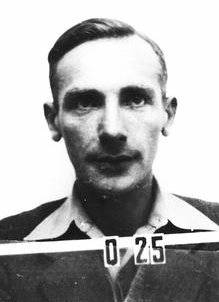
In December 1944, Rotblat leaves Los Alamos. There are many reasons why. He doesn’t know what is happening to his family in Poland, he feels very lonely in the United States. The visa in his Polish passport is running out and the Americans won’t issue him a new one because the FBI suspect him of spying for the USSR. He also leaves – as he will later explain – because he hears the head of the Manhattan Project, General Leslie Groves, saying that the bomb would be used to subdue the Soviet Union. Rotblat can’t come to terms with the idea that the United States are preparing such a terrible weapon for use against an ally. Staying in Los Alamos no longer makes any sense.
On the train between Washington and New York, a trunk containing books intended for Polish physicists after the war disappears in mysterious circumstances, together with family photos from Warsaw. Rotblat believes the FBI is behind the prank.
In January 1945, he returns to Liverpool and on 6th August the Americans drop an atomic bomb on Hiroshima. This news doesn’t provoke feelings of dread in Los Alamos, quite the opposite. Some scientists reserve tables at a café in nearby Santa Fe. They’re celebrating, they open some champagne. They know they’ve created a terrible weapon, but they also believe that only that bomb could end the war with Japan. Józef Rotblat hears about it on BBC radio. He is shaken, crushed. He didn’t think the bomb he’d built would end up being dropped on a city and the civilians living there. He only expected a show of strength, an explosion in some uninhabited place.
Throughout 1945, he also receives news from Poland. His family escaped the Warsaw Ghetto and hid near Otwock. Everyone survived the Holocaust, except for one person, the most important one for him. Tola, his wife, died in the gas chambers in Bełżec.
A change
It’s Christmas Eve 1945, in Liverpool. Outside, the Christmas trees are lit, the world is enjoying the first Christmas of post-war peacetime. Józef Rotblat is completely alone. He knows about the thousands of victims in Hiroshima and Nagasaki, killed by the weapon he’d worked on. He knows that his beloved wife, whom he didn’t manage to bring out of Warsaw, went through hell in the Lublin Ghetto and was gassed. The Americans groundlessly suspect him of being a spy. The war also killed his mentor, Professor Wertenstein, and nearly all his brilliant fellow scientists in the laboratory on Śniadeckich Street. He’ll probably never be able to return to Poland. The British won’t allow him to return to a country in the Soviet sphere of influence.
As he will later recall, on that Christmas Eve he realizes that everything he’s done since 1939 has been pointless, that it hasn’t brought humanity any good. He experiences a kind of cleansing, and decides to change his entire professional life. He also wants to warn scientists that they may become tools for doing evil.
The secret of Bikini Atoll
Driven by a desire to do good, he devotes his skills to medicine. He takes a job at St Bartholomew’s Hospital in London, where he teaches physics to future doctors. He develops his knowledge of isotopes and carries out experiments to fight cancer. But his most important battle is the battle for peace. As a child he lived through World War I in Warsaw, he spent the second one in the US and England, and he’s convinced the world is heading towards another conflict – this time with the use of atomic and hydrogen bombs.
He writes: “Every war turns people into mindless beasts. In wartime, those who hate barbarianism start to behave like barbarians themselves. George Santayana said that those who cannot remember the past are condemned to repeat it. But I say that even if we remember the past, we may still be condemned to repeat it.” He is also referring to himself.
In London, he is under surveillance both by the Polish secret services and the American ones. He does a lot to make the US government detest him, although his actions after the explosion of the hydrogen bomb in Bikini Atoll in 1954 would probably have been sufficient (the co-inventor of this bomb was the aforementioned Stanisław Ulam). Officially, the United States are testing a so-called clean bomb, that is, one without a large radioactive fallout. But the power of the explosion gets out of control. It’s three times bigger than expected. Tens of thousands of people have to be evacuated.
150 kilometres away from the explosion, the Japanese cutter Lucky Dragon No. 5 is fishing for tuna. On their return to port, the crew start to fall ill and have burns on their skin. Geiger counters indicate large doses of radiation on the people and the fish they caught. Later on, one of the fishermen dies. For many months, the Americans deny having anything to do with it, because their bomb, which worked on the basis of fission-fusion, shouldn’t leave behind radioactive fallout.
Józef Rotblat hears about this and asks a Japanese radiobiologist to bring him samples of the dust found on the fishermen. He studies them in London. He discovers that a three-stage bomb exploded in Bikini Atoll: fission-fusion-fission, which causes enormous radioactive fallout (as a result of the final stage – fission). Rotblat publishes an article, which causes an international scandal. The Americans have to pay compensation to the Japanese.
I visited the museum in Tokyo dedicated to the fishermen of the Lucky Dragon, which is a symbol of the harm caused to Japan by the United States, just like Hiroshima and Nagasaki. Rotblat is presented there as a hero.
Russell’s hero
During filming of a BBC programme, Panorama TV, in which he explains to viewers how a hydrogen bomb works, Rotblat meets another of the show’s guests, Bertrand Russell, the legendary British philosopher, mathematician, Nobel laureate for literature, and above all, pacifist. Many books have been written about Russell, but for our story we need only two facts: that he was taken into custody for the first time in 1916 for his pacifist activities during World War I, and for a second time in 1961, straight from a demonstration against nuclear weapons.
In 1955, Russell writes a manifesto, which Albert Einstein signs just before his death. Then he invites Rotblat, as an expert in nuclear physics, to take part in a press conference. Several other scientists had refused to support Russell for fear of sanctions by the British government, which was carrying out atomic tests. This was the start of a friendship between the physicist and the philosopher.
The Russell-Einstein Manifesto calls for action to achieve world peace and nuclear disarmament. It contains the famous words: “Remember your humanity, and forget the rest.” The manifesto, signed by nine Nobel laureates, Rotblat and another Polish physicist, Leopold Infeld, leads to the creation of the Pugwash peace movement (which takes its name from the village in Canada where the first meeting was held). It seems extraordinary, but during the Cold War this movement was able to organize a conference where scientists could meet and talk, despite coming from countries that were formally at war. Pugwash is not concerned about fame or self-promotion, but rather in a discreet way, through confidential meetings and corridor discussions between scientists from both sides of the Iron Curtain, it worked for peace during the Cold War. It may be supposed that Pugwash lies behind many of the peace agreements or disarmament deals between the US and the USSR, from the 1960s to the times of Gorbachev and Reagan.
And Bertrand Russell wrote about Rotblat as follows: “If ever these evils are eradicated and international affairs are straightened out, his name should stand very high indeed among the heroes.”
A destroyed tower
In the archives of Churchill College, Cambridge, I found the draft of a speech, full of crossings out and corrections, given by Józef Rotblat in 1996 to the members of the Polish Academy of Sciences in Warsaw. In it, he outlines his philosophy of the moral responsibility of scientists. But they could be useful indicators for anyone – and they still seem relevant today. Here are some of Rotblat’s thoughts:
“Some academics believed and still believe today that the objective of science is to understand the laws of nature, and since those laws do not depend on human feelings, those human feelings should not have an impact on scientific research. This academic view became the foundation of an egotistical ivory tower in which academics have locked themselves, working in peace and quiet, cut off from social or political issues. […] This ivory tower was finally destroyed by the shockwaves of the Hiroshima bomb.”
“You must not seek protection behind slogans such as: science is neutral, science has nothing to do with politics.”
“It’s impossible to be a silent observer when the governing nomenclature behaves in an insincere way. We can do nothing but protest against the manipulation and concealment of facts, particularly when it comes to matters about which we are experts.”
In his speech, Rotblat recalls that refusing to abide by accepted norms played a major role in the development of civilization. With regard to the courage to be a non-conformist, the physicist liked to quote his mentor and friend, Bertrand Russel: “Do not fear to be eccentric in opinion, for every opinion now accepted was once eccentric.”
Measure your strength by your ambitions
Sustained activity brought the Pugwash movement and Józef Rotblat himself the Nobel Peace Prize in 1995. It transpired at that moment that Poles were only vaguely aware of the laureate’s achievements, and those who did know about them didn’t appreciate them. The outraged columnist Dawid Warszawski wrote in the Gazeta Wyborcza newspaper that Rotblat was a bad choice, because the Nobel Peace Prize should have gone to Sergei Kovalev, a former Soviet dissident and opponent of the war in Afghanistan. Warszawski wrote: “Nowadays peace is not threatened by atomic warheads, but by tanks: Iraqi ones in Kuwait, Serbian ones in Sarajevo, Russian ones in Grozny. […] Can they not see that in Oslo?”
Rotblat requested that Frydryk Chopin’s Heroic Polonaise in A Flat Major opus 53 be played at the Nobel Prize ceremony. Despite not speaking Polish, Sally Milne, Rotblat’s last assistant, can still recite lines from Adam Mickiewicz’s “Song of the Filarets”: “Measure your strength by your ambitions. Not your ambitions by your strength!” She knows them because her boss would repeat them so often.
A building in the Medicine Department at St Bartholomew’s Hospital in London was named after Rotblat, as well as a lecture hall at the University of Liverpool. A scholarship was also created in his name. Michael Gorbachev considered him a friend. In Osaka, the Japanese writer and Buddhist philosopher Daisaku Ikeda planted a cherry tree in honour of Rotblat and his wife Tola. In 1998, Rotblat was given a British order of chivalry.
The physicist remained faithful to the idea of peace until the end of his life. In 2004, just under a year before his death, he took part in a protest against the war in Iraq in Trafalgar Square in London. The British newspapers wrote that the 96-year-old Sir Joseph was the oldest participant in the demonstration.
Translated from the Polish by Zosia Krasodomska-Jones


